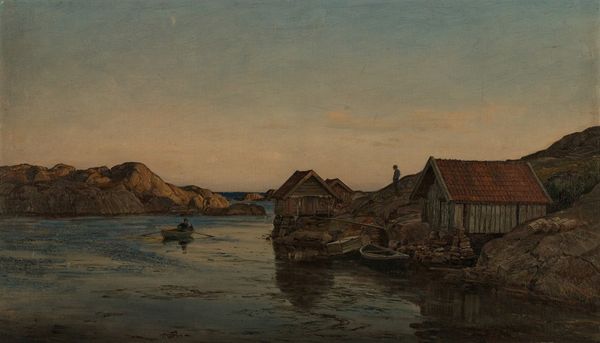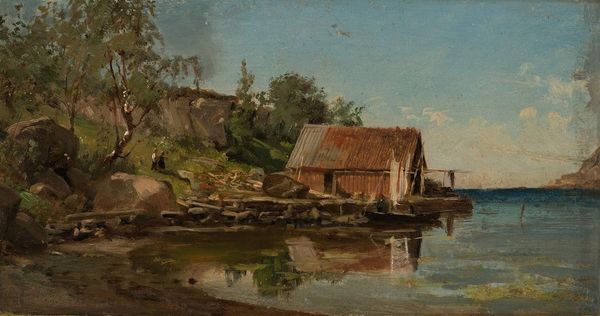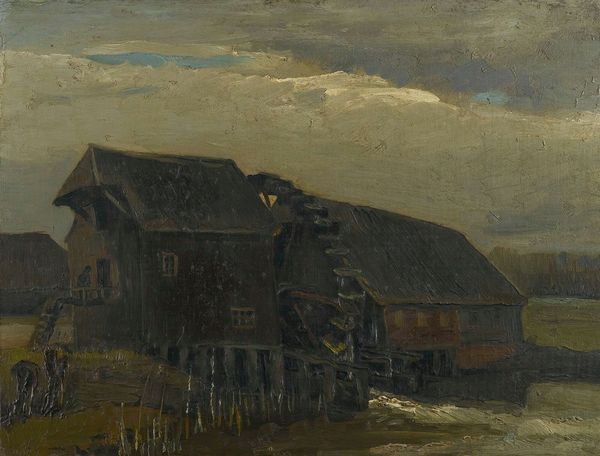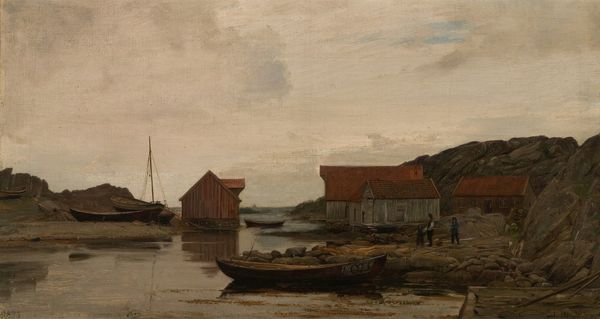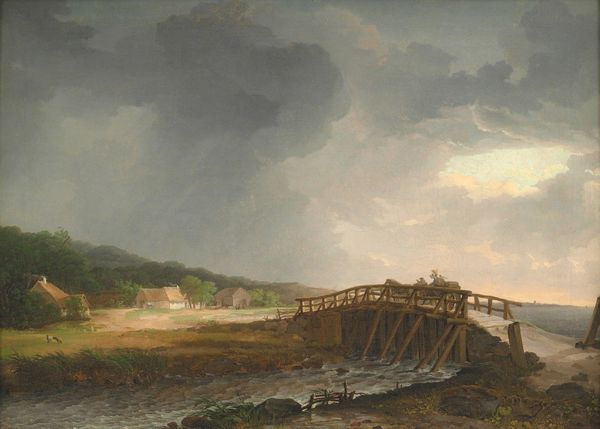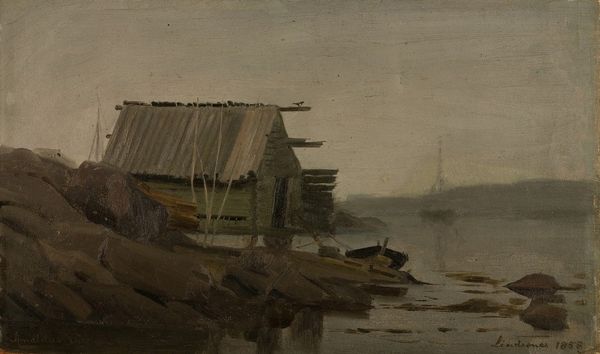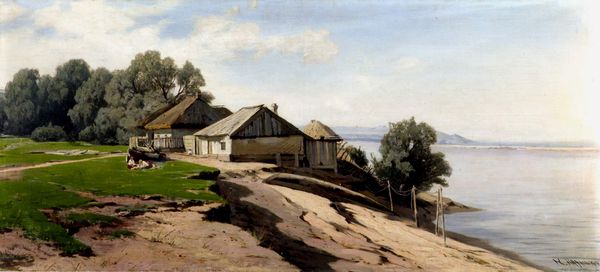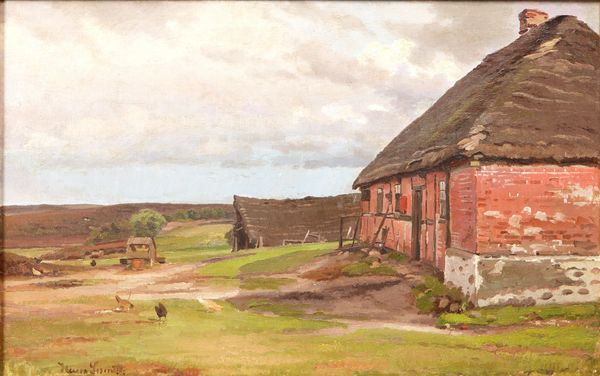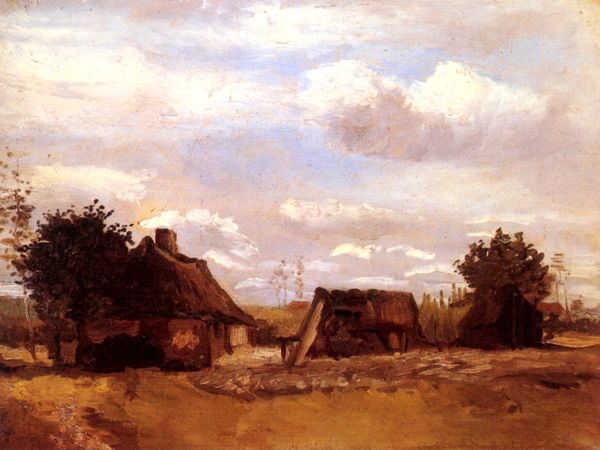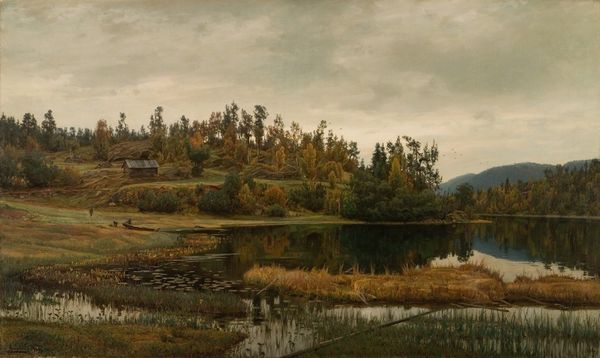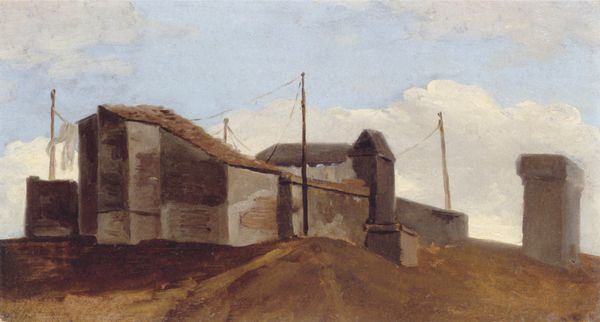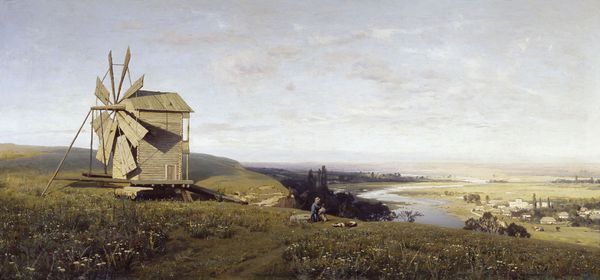
Деревенский пейзаж 1855
0:00
0:00
apollinarygoravsky
Belarusian National Museum of Fine Arts, Minsk, Belarus
Copyright: Public domain
Curator: Apollinary Goravsky's 1855 oil painting, "Derevenskiy Peizazh," presents us with a vision of rural life in 19th century Belarus. Editor: Immediately, I'm struck by the subdued palette and the contrasting textures, from the rough-hewn wooden structures to the smooth, reflective pond. It feels incredibly still, almost melancholic. Curator: The scene resonates with a particular Slavic archetype – a certain pensive relationship with nature, born of a deep history and often tinged with a bittersweet awareness of the passage of time. You see it echoed across Russian and Belarusian literature and folklore. Editor: Precisely. The horizontal composition and the muted earth tones create a strong sense of groundedness. The sky, although subtly rendered, does hold that dominant share of pictorial space, amplifying the melancholy you mentioned. It’s also intriguing how Goravsky uses light to subtly lead the eye – note how it emphasizes the reflection in the water. Curator: It's also about historical memory. The modest dwellings, the figures quietly engaged in everyday tasks, are not just visual elements but signifiers of a particular way of life—a cultural memory now perhaps idealized through the romantic lens of painting. The looming skyline far in the distance suggests perhaps a yearning or tension. Editor: Yes, the subtle interplay between realism and romanticism is a fascinating element. The accurate depiction of the buildings coexists with this sort of... nostalgic atmosphere. The geometry is straightforward: we have right angles of buildings, fence, with circular features offsetting and echoing, notably in the water body, which acts like a lens or filter of the scene, its immediate surrounds and far background. Curator: Look at the small figure by the pond; they suggest stories – cycles of life lived close to the earth. These archetypes endure across cultures. They represent resilience but also a sort of resignation, a common psychological response in the face of harshness and difficulty in early peasant communities across many regions. Editor: For me, it is in these quiet geometric juxtapositions where the true tension lies and an equilibrium—though the question becomes what has brought things to a balance and what disrupts this still pond... Curator: What a profound reminder that even the most seemingly simple scenes can hold complex narratives about our collective history and the archetypes that define us. Editor: Indeed. Through its formal elements, Goravsky's work transcends mere representation and becomes an enduring reflection on humanity’s place within the landscape, the past, present, and, yes, a sense of memory—of both the ideal and real—made physical.
Comments
No comments
Be the first to comment and join the conversation on the ultimate creative platform.
